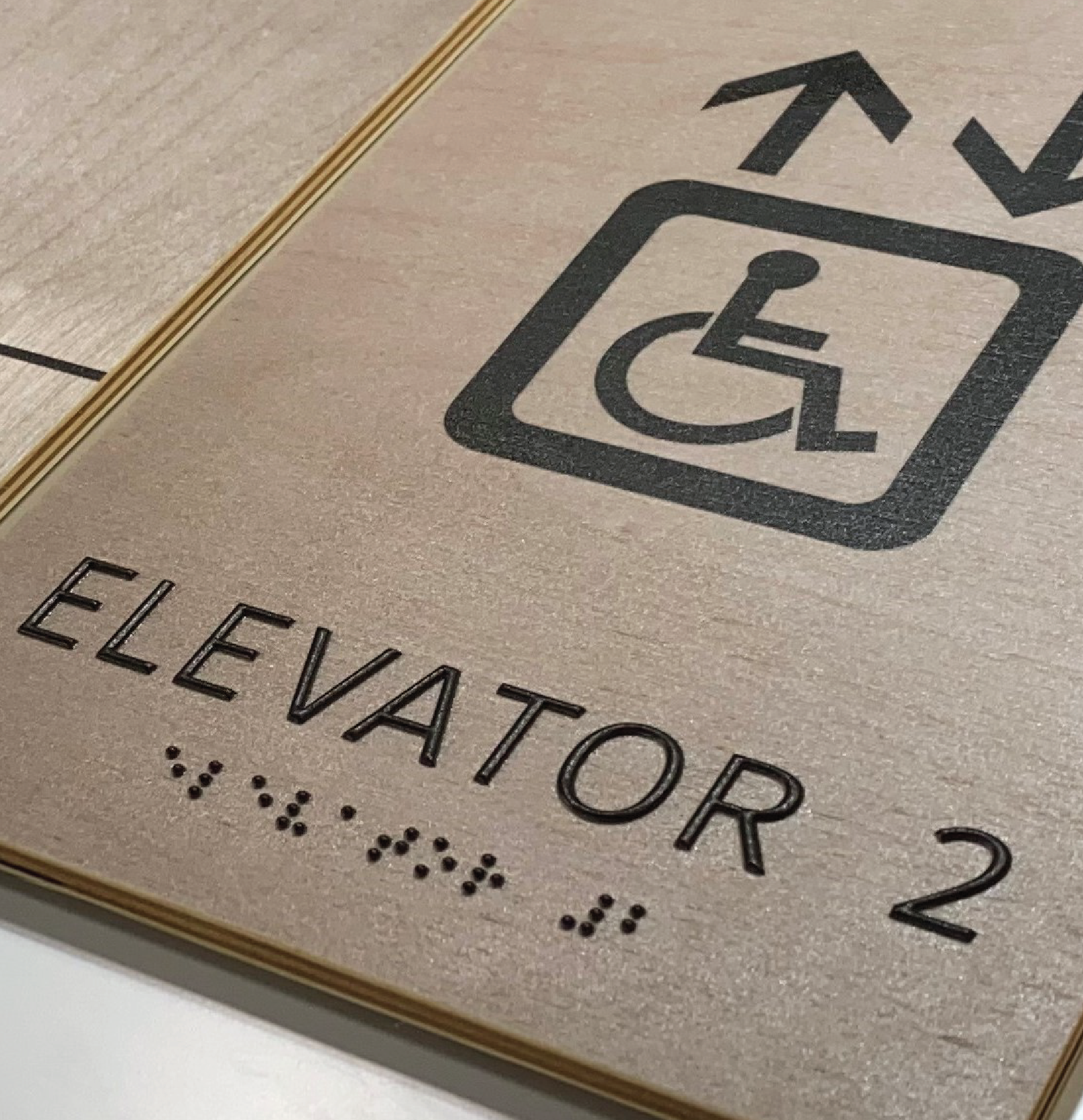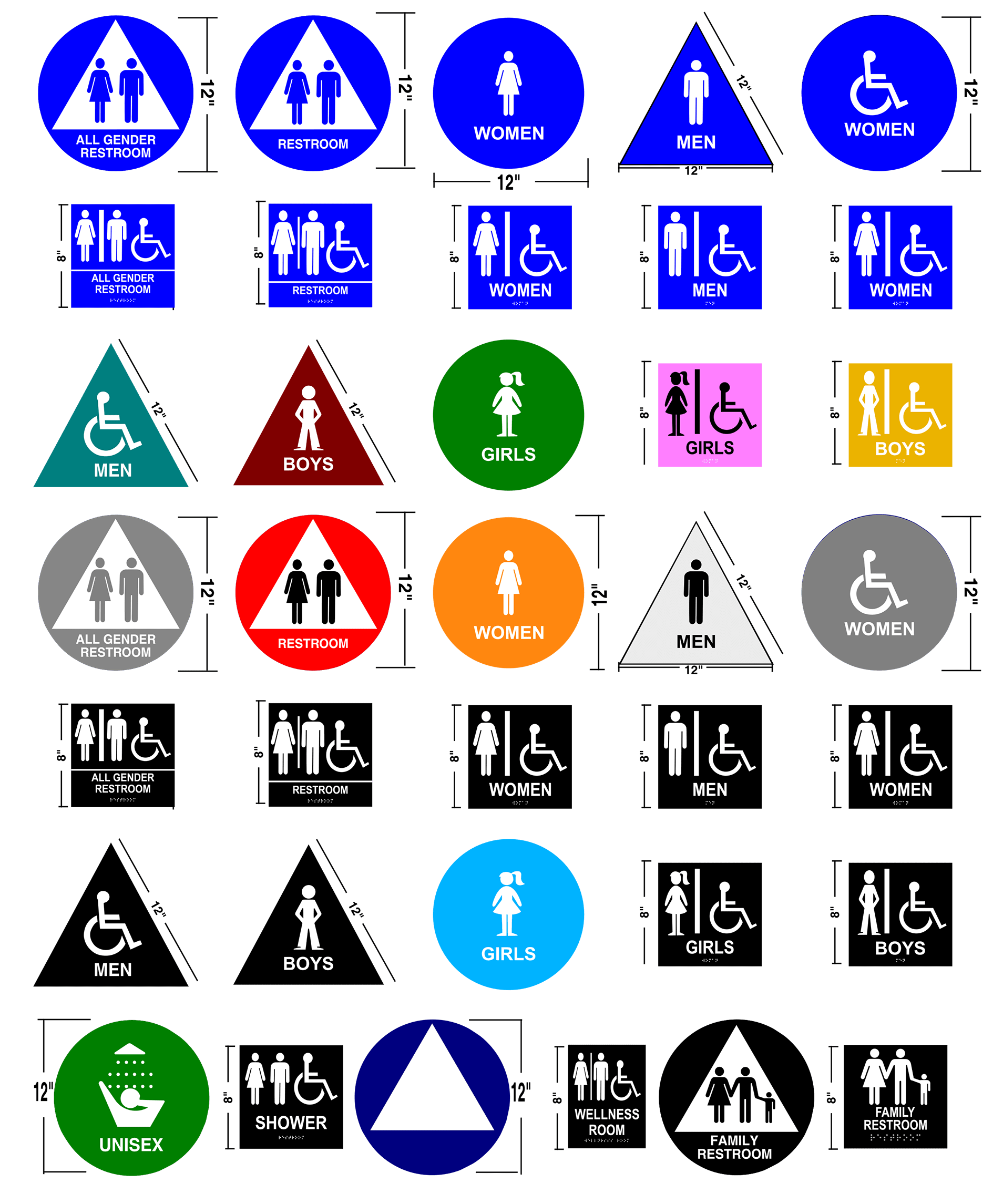Exactly How ADA Signs Boost Availability for Everyone
Exactly How ADA Signs Boost Availability for Everyone
Blog Article
Checking Out the Key Features of ADA Indications for Improved Ease Of Access
In the realm of ease of access, ADA signs serve as quiet yet powerful allies, ensuring that rooms are inclusive and navigable for people with disabilities. By incorporating Braille and tactile aspects, these indicators damage barriers for the aesthetically impaired, while high-contrast color schemes and understandable font styles provide to varied visual demands.
Relevance of ADA Conformity
Ensuring conformity with the Americans with Disabilities Act (ADA) is vital for cultivating inclusivity and equivalent accessibility in public areas and offices. The ADA, enacted in 1990, mandates that all public centers, employers, and transport services suit individuals with handicaps, ensuring they appreciate the very same rights and opportunities as others. Conformity with ADA criteria not just fulfills lawful obligations but also enhances an organization's reputation by demonstrating its dedication to variety and inclusivity.
Among the crucial aspects of ADA conformity is the execution of accessible signs. ADA indications are designed to ensure that individuals with specials needs can quickly navigate via structures and areas. These signs need to abide by specific guidelines relating to dimension, font style, color contrast, and positioning to ensure presence and readability for all. Appropriately implemented ADA signs aids get rid of obstacles that individuals with impairments typically experience, thereby promoting their self-reliance and confidence (ADA Signs).
Moreover, sticking to ADA policies can minimize the risk of prospective penalties and legal repercussions. Organizations that fall short to adhere to ADA standards may encounter legal actions or penalties, which can be both financially challenging and destructive to their public photo. Thus, ADA compliance is integral to fostering an equitable environment for every person.
Braille and Tactile Aspects
The unification of Braille and tactile aspects right into ADA signs personifies the principles of access and inclusivity. It is commonly placed beneath the corresponding message on signage to ensure that people can access the information without visual support.
Responsive elements extend past Braille and consist of increased symbols and personalities. These components are developed to be discernible by touch, permitting people to determine area numbers, toilets, departures, and various other essential locations. The ADA establishes certain guidelines regarding the dimension, spacing, and positioning of these tactile components to maximize readability and guarantee uniformity across different atmospheres.

High-Contrast Color Design
High-contrast shade plans play a critical role in enhancing the exposure and readability of ADA signage for individuals with aesthetic disabilities. These systems are crucial as they maximize the distinction in light reflectance between text and history, guaranteeing that signs are quickly noticeable, also from a range. The Americans with Disabilities Act (ADA) mandates the use of specific shade contrasts to fit those with minimal vision, making it an important element of conformity.
The effectiveness of high-contrast shades depends on their capability to attract attention in different lights conditions, consisting of poorly lit settings and locations with glow. Usually, dark message on a light history or light message on a dark history is utilized to achieve ideal contrast. For circumstances, black message on a yellow or white background provides a stark visual difference that helps in fast acknowledgment and understanding.

Legible Fonts and Text Dimension
When thinking about the style of ADA signage, the option of understandable typefaces and appropriate message size can not be overstated. These aspects are essential for making certain that signs are obtainable to people with aesthetic impairments. The Americans with Disabilities Act (ADA) mandates that font styles have to be not italic and sans-serif, oblique, script, very attractive, or of unusual form. These requirements help make certain that the text is quickly readable from a range which the characters are appreciable to varied audiences.
The dimension of the message additionally plays a pivotal duty in availability. According to ADA standards, the minimum message elevation need to be 5/8 inch, and it needs to boost proportionally with seeing range. This is particularly crucial in public spaces where signage needs to be checked out rapidly and accurately. Uniformity in message size contributes to a cohesive aesthetic experience, aiding individuals in navigating settings efficiently.
Furthermore, spacing between letters and lines is indispensable to clarity. Adequate spacing stops personalities from showing up crowded, boosting readability. By adhering to these requirements, developers can considerably enhance accessibility, guaranteeing that signs offers its designated function for all people, despite their visual capacities.
Effective Placement Techniques
Strategic placement of ADA signage is necessary for making the most of access and making certain conformity with legal standards. ADA guidelines state that indicators should be mounted at a height in between 48 to 60 inches from the ground to guarantee they are within the line of view for both standing and seated individuals.
In addition, indications must be positioned adjacent to the latch side of doors to enable very easy identification prior to access. This placement aids people find areas and rooms without blockage. In cases where there is no door, indicators ought to be positioned on the closest adjacent check that wall. Uniformity in indication positioning throughout a center enhances predictability, decreasing confusion and enhancing total user this experience.

Final Thought
ADA indications play a vital role in advertising availability by integrating features that deal with the requirements of people with disabilities. Integrating Braille and responsive elements ensures vital information is accessible to the aesthetically damaged, while high-contrast shade plans and understandable sans-serif typefaces boost exposure throughout different illumination conditions. Reliable positioning methods, such as ideal mounting elevations and calculated places, further facilitate navigating. These components collectively foster an inclusive atmosphere, highlighting the significance of ADA compliance in making sure equal gain access to for all.
In the world of availability, ADA signs serve as quiet yet effective allies, ensuring that areas are accessible and comprehensive for individuals with handicaps. The ADA, passed in 1990, mandates that all public centers, companies, and transportation services accommodate individuals with specials needs, guaranteeing they delight in the exact same civil liberties and possibilities as others. ADA Signs. ADA indications are made to ensure that people with handicaps can quickly navigate via buildings and areas. ADA standards specify that signs ought to be installed at an elevation between 48 to 60 inches from the ground to guarantee they are within the i thought about this line of view for both standing and seated individuals.ADA signs play a crucial role in promoting ease of access by incorporating features that attend to the needs of people with handicaps
Report this page